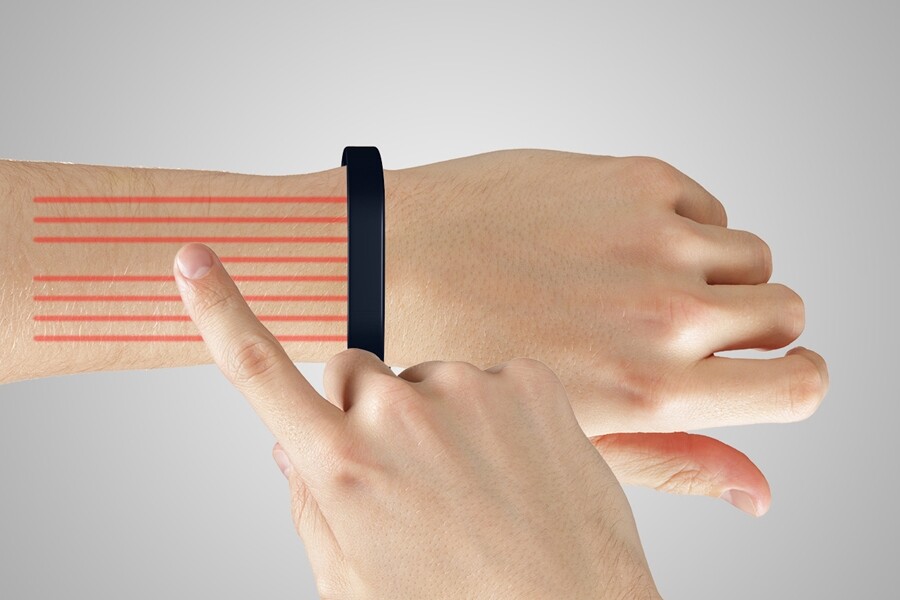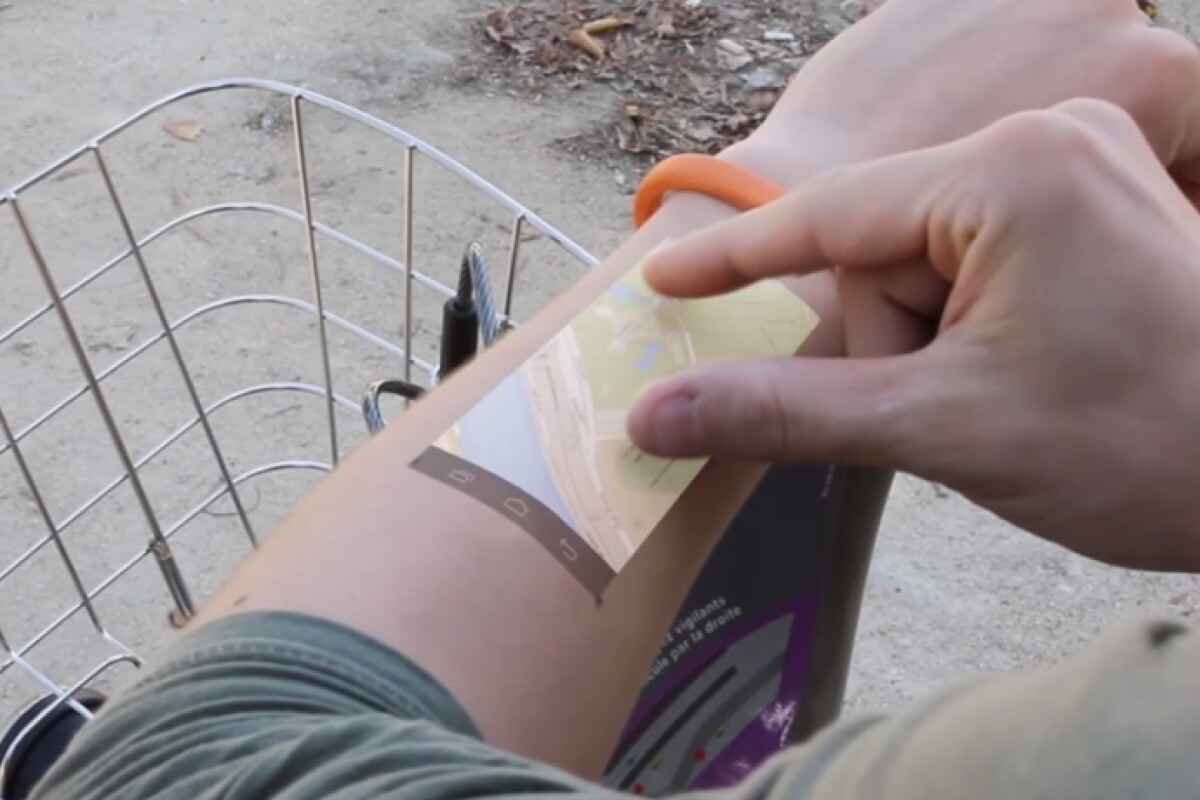With wearables gaining some traction, smartphones and tablets are by no means the only mobile devices around nowadays. Now, though, Cicret is looking to take things a step farther and turn your arm into a smartphone.
Conceived 12 months ago and designed over the course of 6 months, the Cicret Bracelet is a small wristband that looks similar to the Jawbone Up.

The Bracelet comprises a pico projector and a row of eight proximity sensors that point towards the user's forearm. It operates as a standalone device and, when activated with a twist of the wrist, projects an Android interface onto the users arm, much like Chris Harrison's Skinput research. The proximity sensors detect where the user's finger or fingers are and allow them to interact with the interface as they would any other Android device.
There are potential advantages to turning ordinary objects (or, in this case, limbs) into mobile devices, but projected touch screens typically lack the responsiveness and visual clarity of the glass screens we're used to. This projected keyboard, for example, delivered a poor typing experience.
It should be interesting to see if the Cicret Bracelet can improve on the technology, to make something we'd actually want to use.

Elsewhere, the Cicret Bracelet features an accelerometer and a vibration module, along with an LED for notifications. Connectivity is provided by way of WiFi, Bluetooth and a Micro USB port. It is expected to be made available in 16 GB and 32 GB models.
The device will allow users to send and receive emails, browse the web and play games. It will also be possible for users to pair it with an existing smartphone, answer incoming phone calls and activate the speakerphone functionality on the their smartphone.
Cicret is in the process of raising funds for the further development and production of the Bracelet, but Pommier says he expects the device to reach the mass market within a year and a half. The device could cost up to $400, he says, based on what the company's research suggests people would be willing to pay (sounds like a hard sell to us).
Cicret co-founder Guillaume Pommier tells Gizmag that the first prototype is due for completion in about three weeks time.
The video below provides an introduction to the Cicret Bracelet.
Update (January 7, 2015): In response to queries about the project's progress, Pommier says that "we do have a working prototype now and are working on it to 'upgrade' it." We'll keep you posted.
Update (February 4, 2015): Pommier has now released a short video showing the first working prototype of the bracelet in action, which you can see below. The video page also includes a progress update from the Cicret Team.
Source: Cicret











